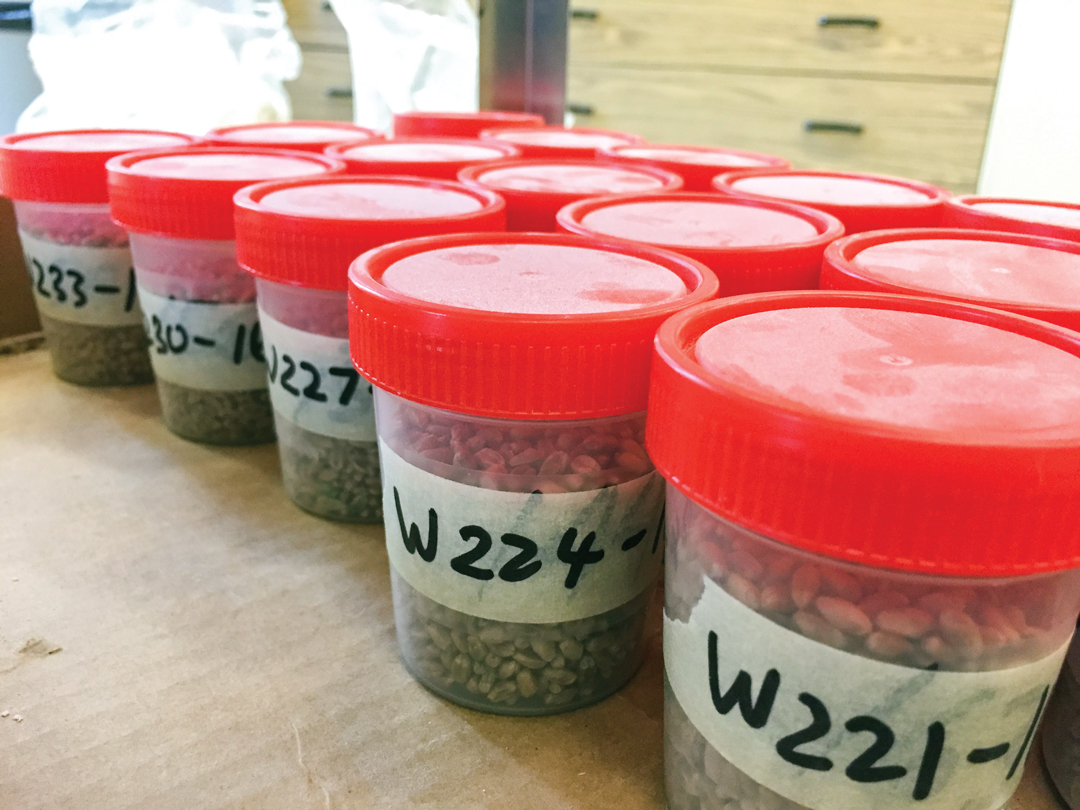GRAIN DRYING DATA MAY BOOST THE BOTTOM LINE
BY ELLEN COTTEE • PHOTO COURTESY OF CEREALS CANADA
Unpredictable weather and fall uncertainty in recent years have seen farmers harvest early and rely on grain dryers to handle crops with markedly high moisture levels. With this near-dependence on drying, they are constantly on the lookout for methods to improve their financial return.
Chandra Singh is applied research chair in agricultural engineering and technology at the Lethbridge College Centre for Applied Research, Innovation and Entrepreneurship. He leads a team of researchers engaged in an extensive grain drying study. Launched in spring of 2021, funders include Results Driven Agriculture Research (RDAR), Alberta Innovates and the Alberta Wheat Commission.
The three-year project will assess on-farm grain drying systems by evaluating the quality of grain produced as well as the cost of energy consumed in the drying process. “As you expect in the ag industry, farm operations are unique, and that is the challenge,” said Singh. “It’s very difficult to generalize.”
To navigate the wide variety of on-farm drying systems in use, the project is collecting grain drying data from more than 40 Alberta farms. This encompasses a variety of drying techniques that include in-bin drying, supplemental heat drying and low- and high-temperature drying.
Unfortunately, the widespread drought conditions experienced during the 2021 crop season limited the scope of the study’s first-year data. “By the time we reached harvest, we found the grain was already dried,” said Singh. “We ended up not having enough data on in-bin and high-temperature drying.” Despite this, the project did gather valuable information about the grain spoilage and drying histories of participating farms as well as their methods and the individual challenges they face with drying.
For the latest crop year, Singh’s team monitored moisture levels remotely, where possible, through moisture sensors located in drying bins. On-farm data collection was also used. Researchers visited farms to collect grain and further moisture readings as needed. Grain samples were tested at Lethbridge College and the Cereals Canada Winnipeg, MB, office for post-drying quality and, in the case of wheat, milled flour quality based on the drying method.
High-quality wheat is in demand on the world market. According to David Simbo, RDAR research program manager, this is why the project is valuable.
“There is an impact of selling low-quality product. Some end-users might just turn their back,” said Simbo. “We don’t want that for our Canadian product, because Canadian wheat is known for its high quality.”
Energy use in drying is another major component of the project. Singh hopes the data produced will help farmers square the expense of grain drying with their financial bottom lines.
“Even with the limited data from last year, we have seen a huge difference between farms in terms of energy consumption for drying,” he said. “It’s one of our goals to optimize the energy consumption, considering the cost of energy is going up.”
With two more years of data collection to assess, Singh looks forward to seeing the real-world impacts of his work on farms. “We really hope we can contribute value to farm operations in a positive way, so farmers can better manage their grain with less hassle, improved quality and reduced cost of drying and handling.”







Comments